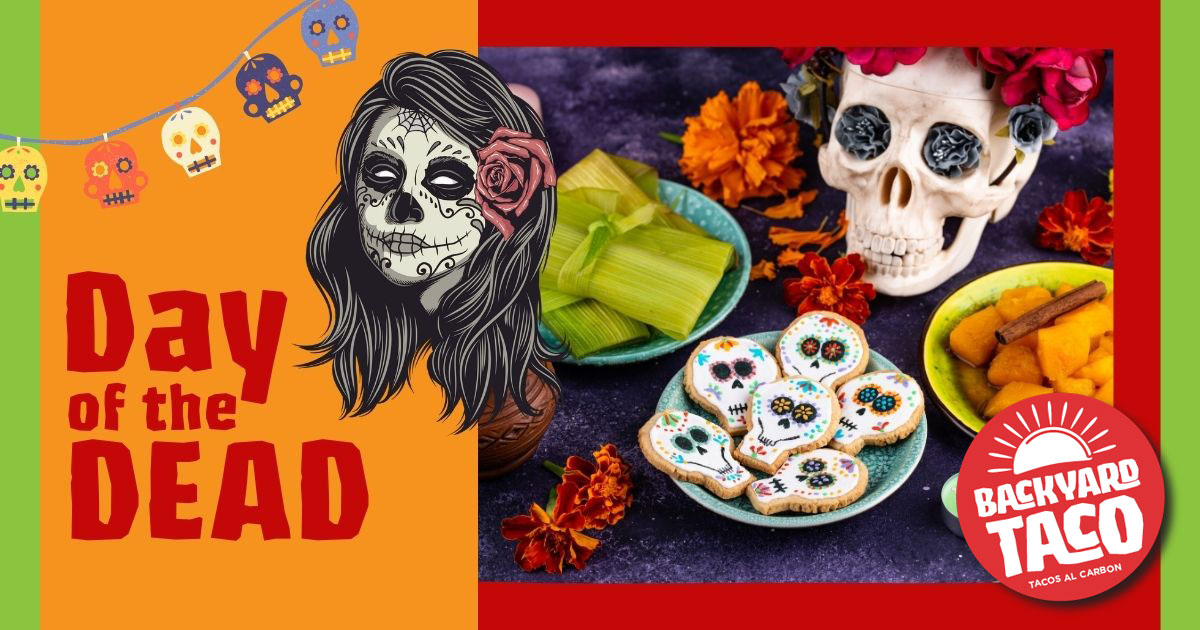El Dia de los Muertos, or the Day of the Dead, has a deep and rich tradition that isn’t widely known or celebrated in the United States. Like every holiday, it comes with a host of unique traditions and symbolizes something special to a particular group of people. You’ve probably seen the traditional sugar skull decorations, colorful paper formed into complex designs called papel picado, or even stylized skull makeup, but do you know the story behind them?
If you ever travel to Mexico at the beginning of November, you’ll see evidence of Day of the Dead celebrations spread far and wide. Even here in Arizona, there’s a rich Mexican heritage, and celebrations are common. No matter your association with the holiday, it’s important to recognize what it means to the people who celebrate it and appreciate the culture it comes from.
Day of the Dead Origins
This holiday has a long history, extending back to at least 3000 years ago. During that time, Mexico was inhabited by native peoples, including the Aztecs as well as the Nahua people. These people have their own rich history, and one of their most influential beliefs is that they taught that the universe existed in cycles. This meant that death was an essential and continual part of life. As a result, native Mexicans felt it was disrespectful to mourn the dead because death was simply another part of life. Instead, the dead remained a part of the community, and they were allowed to come back to their families on el Dia de los Muertos.

Many native people believed that when a person died, they went to a place called Chicunamictlan, or the Land of the Dead. The dead had to travel through nine levels of Chicunamictlan, all of which were incredibly difficult to navigate. These nine levels involved crossing a river, a hilly place, an “obsidian mountain,” a place with “obsidian wind,” a location with raised banners, a location where people are pierced by arrows, a location where the hearts of people are eaten, and another obsidian place for the dead. Only after this years-long expedition could their souls reach Mictlan, a resting place.
The Nahua people honored their dead during August with celebrations and rituals. The people offered water, tools, and food meant to help the dead on their journey to their final resting place. These rituals, along with the Aztec use of skulls to honor the dead, would eventually influence modern el Dia de los Muertos rituals, where offerings of food and water are left for the dead at graves or even altars in the home.
However, once the Spanish arrived, all holidays and celebrations were shifted to correspond with Catholic holidays, including All Saints Day and All Souls Day. These two fall on November 1st and 2nd each year, and the Day of the Dead was moved to November 2nd. Early traditions from the Aztecs and Nahua people melded together with colonial Catholicism to become modern-day el Dia de los Muertos celebrations.
All Souls Day vs. Day of the Dead vs. Halloween
Because All Souls Day, Day of the Dead, and Halloween are so close to one another on the calendar, they are often associated or confused with each other. In addition, it has recently become popular for people in the US to use stylized makeup to dress as sugar skulls or use skeleton costumes that evoke the Day of the Dead as a part of their Halloween celebration. However, they often don’t consider the origins of the celebration when doing so. As a result, it’s important to note that these holidays are not all the same; while they may influence one another, they are distinct days.
All Souls Day also occurs on November 2nd each year and is a day of remembrance. It is primarily celebrated by those adhering to particular Christian religious denominations, including Catholics. All Souls Day is specifically meant for “the faithful,” or the baptized. Celebration of All Souls Day occurs to assist with getting a soul to heaven through prayer, deeds, and alms. It is similar to the Day of the Dead because it is a celebration in remembrance of the souls of the deceased and intended to help them on their journey. However, on el Dia de los Muertos, family members are not thought of as achieving salvation for their loved ones. They are simply providing sustenance on the long journey.
Halloween is celebrated a few days earlier than el Dia de los Muertos, although they’re still very close in date. Rather than a remembrance for those who are lost, Halloween is meant more as an admiration of survival. People originally dressed in scary costumes on All Hallows Eve, the night that the veil between the living and dead worlds was supposedly the thinnest, and the costumes would scare away any evil spirits. These traditions, much like the Day of the Dead, predate Christian influence. However, there is not a connection between Halloween and Day of the Dead other than the fact that colorful skulls are a popular theme for both.
Day of the Dead Traditions
Outside of the home, graves are cleaned to make preparations for spirit arrivals. People often take food and drink to cemeteries to sustain the dead. Meanwhile, music is played, and people dance for the spirits.
Those who celebrate the Day of the Dead at home build altars to honor their dead. These altars are called ofrendas, which translates to offering, and offerings are placed upon the altar. Typically, artifacts that belonged to the deceased, photos, and other mementos are a part of the ofrenda.
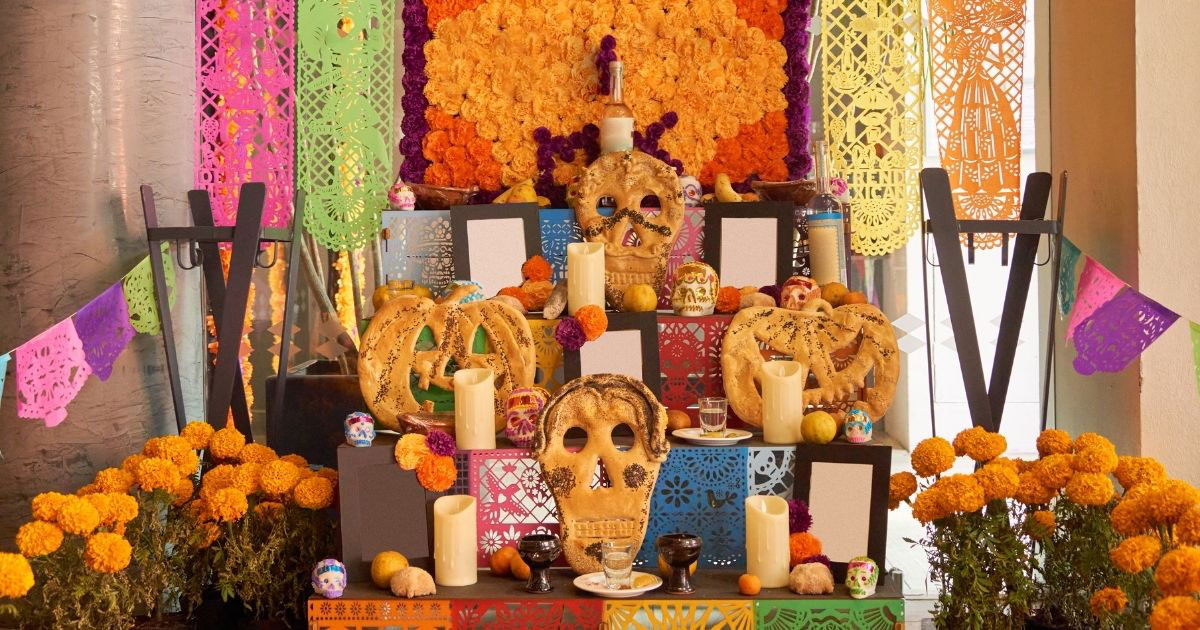
Whether at home or at gravesites, food is an important part of the Day of the Dead. Food offerings typically include chiles, tamales, and pan de muerto, a sweet bread with a citrus element unique to the holiday. Mole negro is another food with rich origins in the holiday. Made with blackened chiles and chocolate, this sauce is typically poured over other foods to savor. Tortilla soup is another food that’s seen in the holiday’s celebrations. It has a spicy base and lots of add-in ingredients like limes, onions, chicharrones, and avocados.
Water and tequila are the typical liquid offerings. Other traditional beverages include atole, a non-alcoholic drink with cinnamon and vanilla, as well as horchata and pulque, also called Nectar of the Gods. Marigolds, called cempasuchil, are used to decorate ofrendas, as they help in pointing spirits home.
On the Day of the Dead, families place offerings and tell stories or read poems about lost loved ones. Copal incense is also used as a guiding light for spirits allowed to return home by the Lady of the Dead, Mictecacihuatl, so that they can meet with their living loved ones. Molded clay sugar skulls are decorated and included on the altar, as are papel picado. Each of the items placed on the ofrenda, as well as the altar itself, represents the four life elements: water, earth, fire, and wind. Because of the mix of religions and cultures that celebrate the Day of the Dead, some family traditions also include a Christian or Catholic element like a crucifix or patron saints.
La Catrina
La Calavera Catrina, which translates to the elegant skull, is another permeating figure in el Dia de los Muertos celebrations. However, it’s important to know that La Catrina is a more recent addition to the scene. The early 20th Century saw a time rich in political cartoons, and Jose Guadalupe Posada was one such artist who would make commentary on politicians and general life at the time with his lithographs and prints.
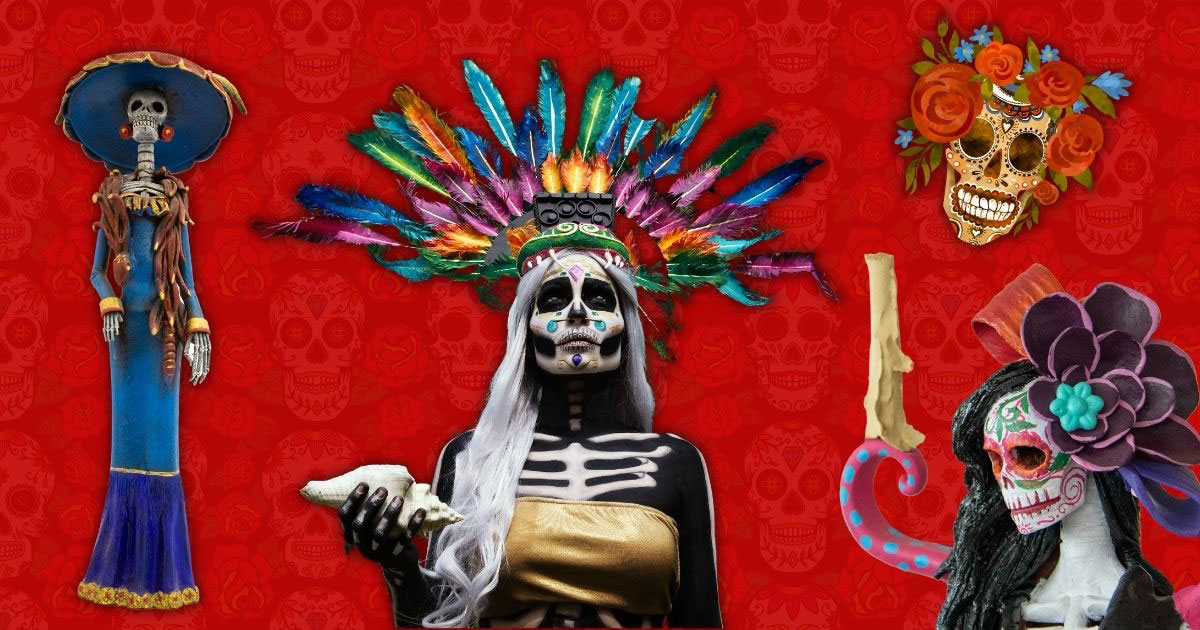
La Calavera Catrina came about as a satire of an indigenous woman hiding her heritage and culture with French clothing. This commentary on indigenous and modern elements meeting took off, and the depiction became a major part of the holiday’s celebrations. The use of stylized skulls and skeletons, in general, may have occurred because of Posada’s art.
The Day of the Dead Is Honored by UNESCO
Recognizing Mexico’s rich cultural heritage is very important. To do so, it’s crucial to recognize that heritage is about more than monuments, artifacts, and art; heritage is also deeply enmeshed in food and celebrations. UNESCO, the United Nations Educational, Scientific and Cultural Organization, works toward world peace by recognizing important parts of cultural heritage from different cultures across the globe.
UNESCO has developed a list of important, intangible cultural heritage pieces, such as Pyongyang’s Raengmyong culture, Xhubleta of Albania, and Tsiattista in Cyprus. Each of these things is an important part of the culture of the people, but also an important thing to document and keep safe in the world. The same is the case for el Dia de los Muertos celebrations in Mexico and in other countries. In 2008, UNESCO officially recognized this holiday as a culturally significant event.
UNESCO made it a point to recognize the mixing of cultures, including traditional Native culture as well as Catholic and Christian influence, that have made the holiday what it is today. While there is a significant Catholic and colonizer influence on the traditions involved in Day of the Dead, it is celebrated by many people across many different religious groups. The beauty of this holiday is the liveliness and enduring presence of Native heritage. Through the celebration of the Day of the Dead, loved ones are honored according to their heritage, thus reaffirming the position of Native people in the political landscape.
How Should I Celebrate the Day of the Dead?

Celebrating and honoring culture is a beautiful thing. One important step to respectfully celebrating the Day of the Dead if it is not part of your own cultural heritage is learning about the holiday itself and the culture surrounding it. Knowing that the Day of the Dead has a rich history, and is an important piece of culture for anyone with heritage in Central America and Mexico, can make a profound impact on anyone who wishes to celebrate.
Celebrating this day means remembering and honoring your own loved ones. While the celebration is big and beautiful in Mexico, it should still be looked at respectfully. Here in the US, if your family does not typically place an ofrenda in your home, you can consider indulging in authentic Mexican food, like tacos and meals with chicken. Then, purchase some Pan de Muertos, consumed by the living and left as an offering for the dead.
Celebrate With Us
At Backyard Taco, nothing is more important to than the traditions that inspire great food. We started out in our own backyard, making food for friends, family, neighbors, and even strangers. Our culture, originating from Mazatlan, Mexico, has been an enormous influence on the way we cook and the way we share our best with the people of the Valley area. We believe that the freshest and most authentic ingredients genuinely bring people together, and we strive to make every bite more delicious than the last.
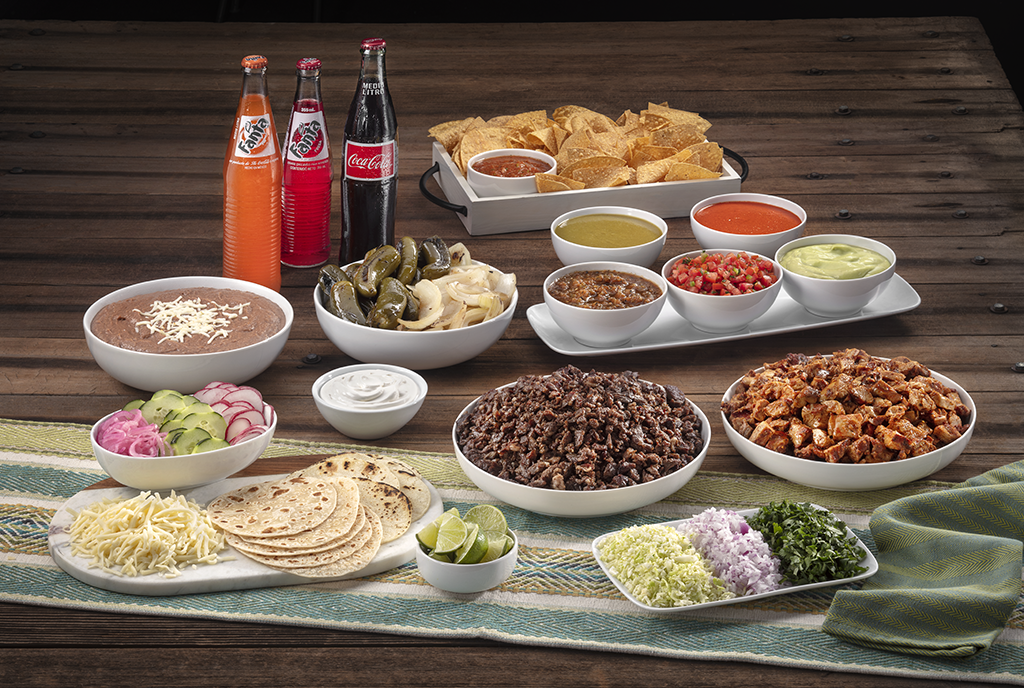
Arizona boasts a large population of people whose heritage originates in the regions where el Dia de los Muertos was first celebrated, and we love to share with them and all other members of the community. We enjoy infusing traditional Mexican food with authentic flavors, and we especially love honoring the traditions of our culture and heritage. Whether you want to know more about the origins of Taco Tuesday, why Mexican Coke just tastes better, or practically anything else about Mexican culture, check out the Backyard Taco blog. If you’re looking for simply Mexcellent food, try any of our locations and become one of our newest amigos.
Resources :
- https://www.history.com/news/day-dead-dia-de-muertos-origins
- https://www.nationalgeographic.com/travel/article/top-ten-day-of-dead-mexico
- https://ich.unesco.org/en/RL/indigenous-festivity-dedicated-to-the-dead-00054
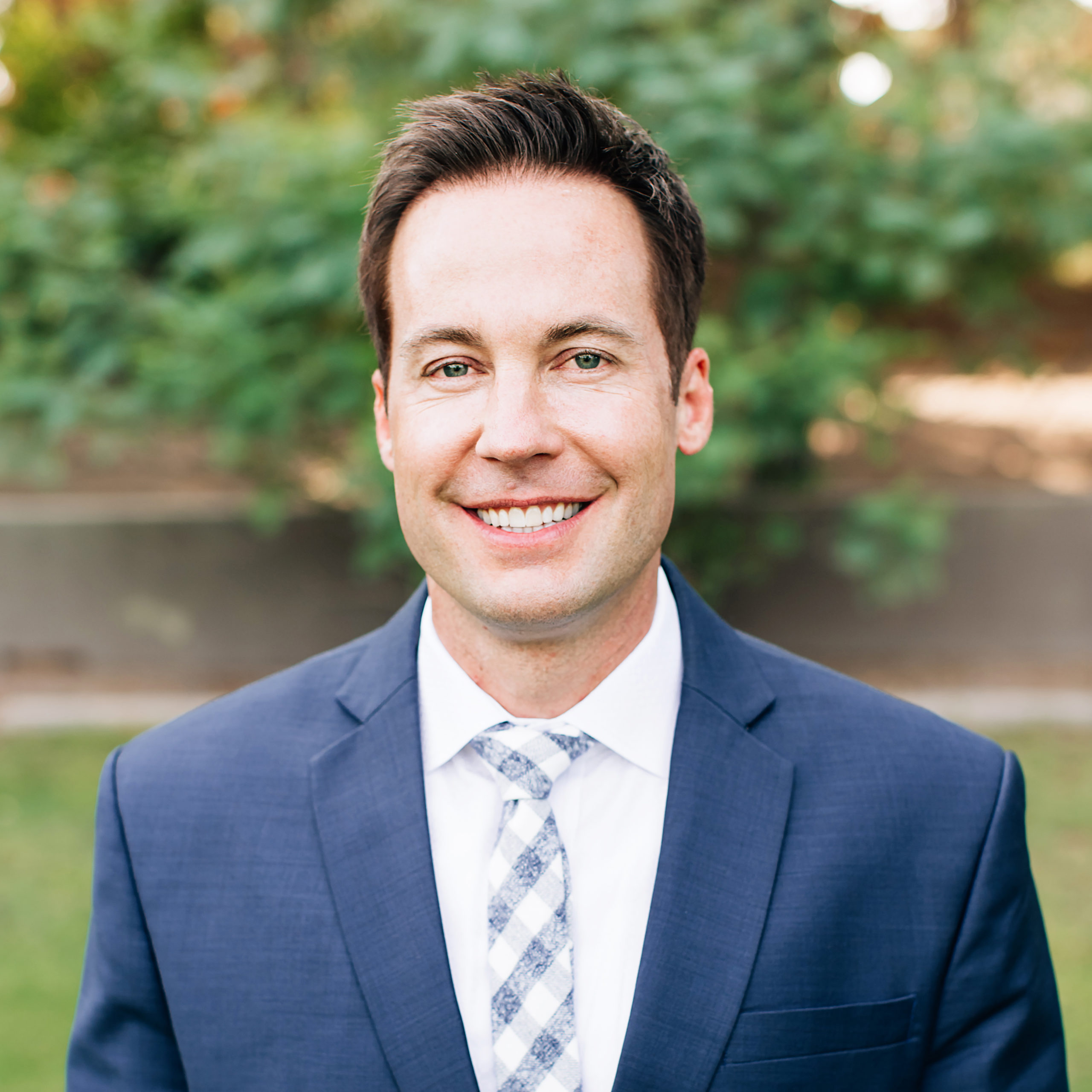
Dr. Tyler loves tacos! He is one of the owners of Backyard Taco, and can sometimes be found moonlighting there at night or on the weekends.
Dr. Tyler Robison is an alum of Mesa’s Mountain View High School. He graduted from Brigham Young University before being accepted to the “Top Ten-nationally ranked” University of Louisville in Kentucky, where he earned his Doctorate in Dental Medicine and a Master’s Degree in Oral Biology. He graduated with honors in the top ten percent of his class. Dr. Robison continued at the University of the Pacific in San Francisco, where he received a second master’s degree in dental science and his orthodontic certification.
Dr. Tyler enjoys serving in his community. He is a provider for the Smile Back Foundation, which offers scholarships for free dental treatment to underprivileged East Valley students. He is also a Major in the U.S. Army Reserve and served during Operation Enduring Freedom in 2008.
Dr. Tyler Robison’s favorite pastimes include spending time with his family on the lake, at the beach, or on the slopes. He is an avid and crazy snowboarder! He has three incredible sons and one sweet daughter: Caden, Jace, Crew, and Bliss.
